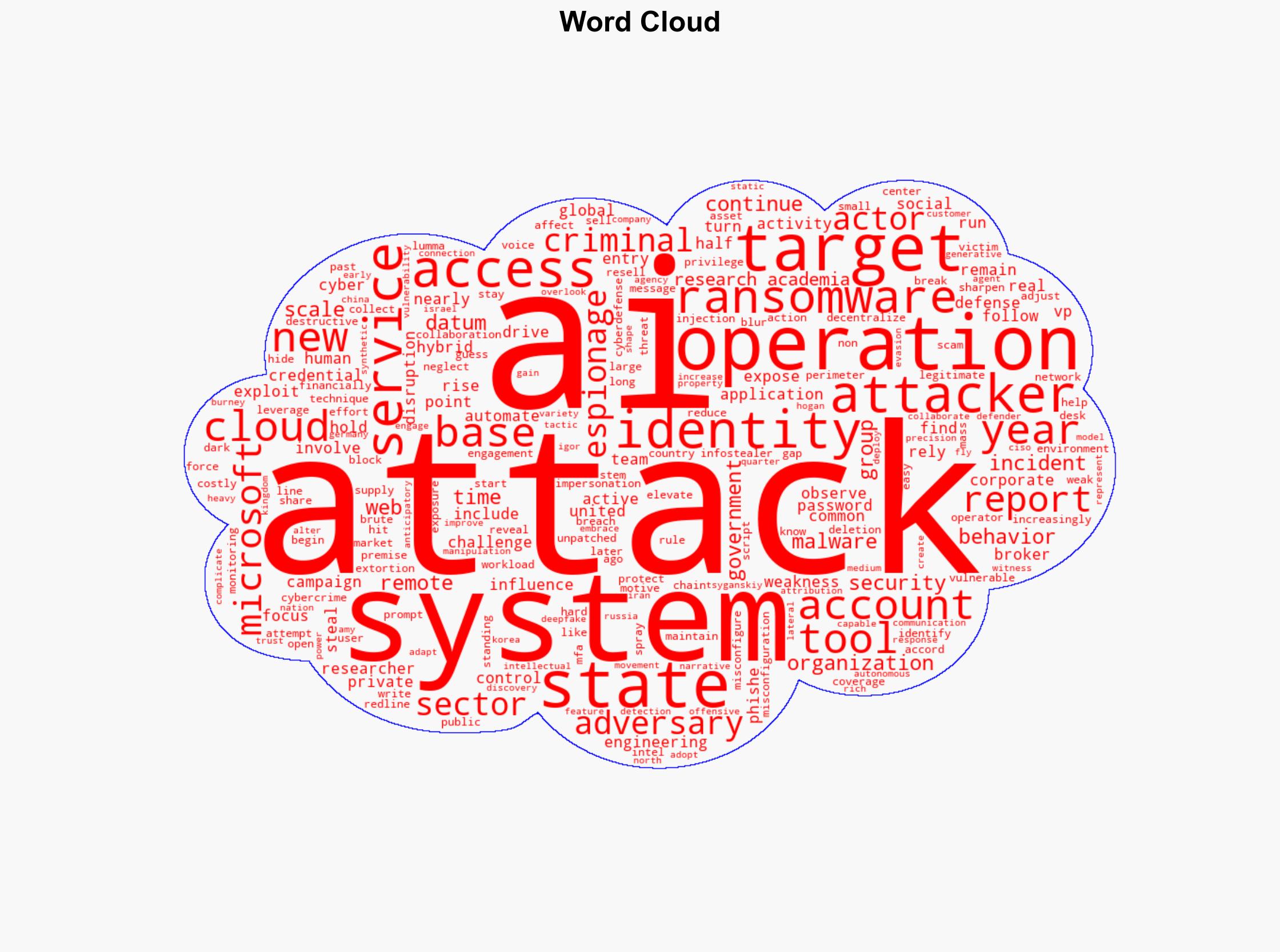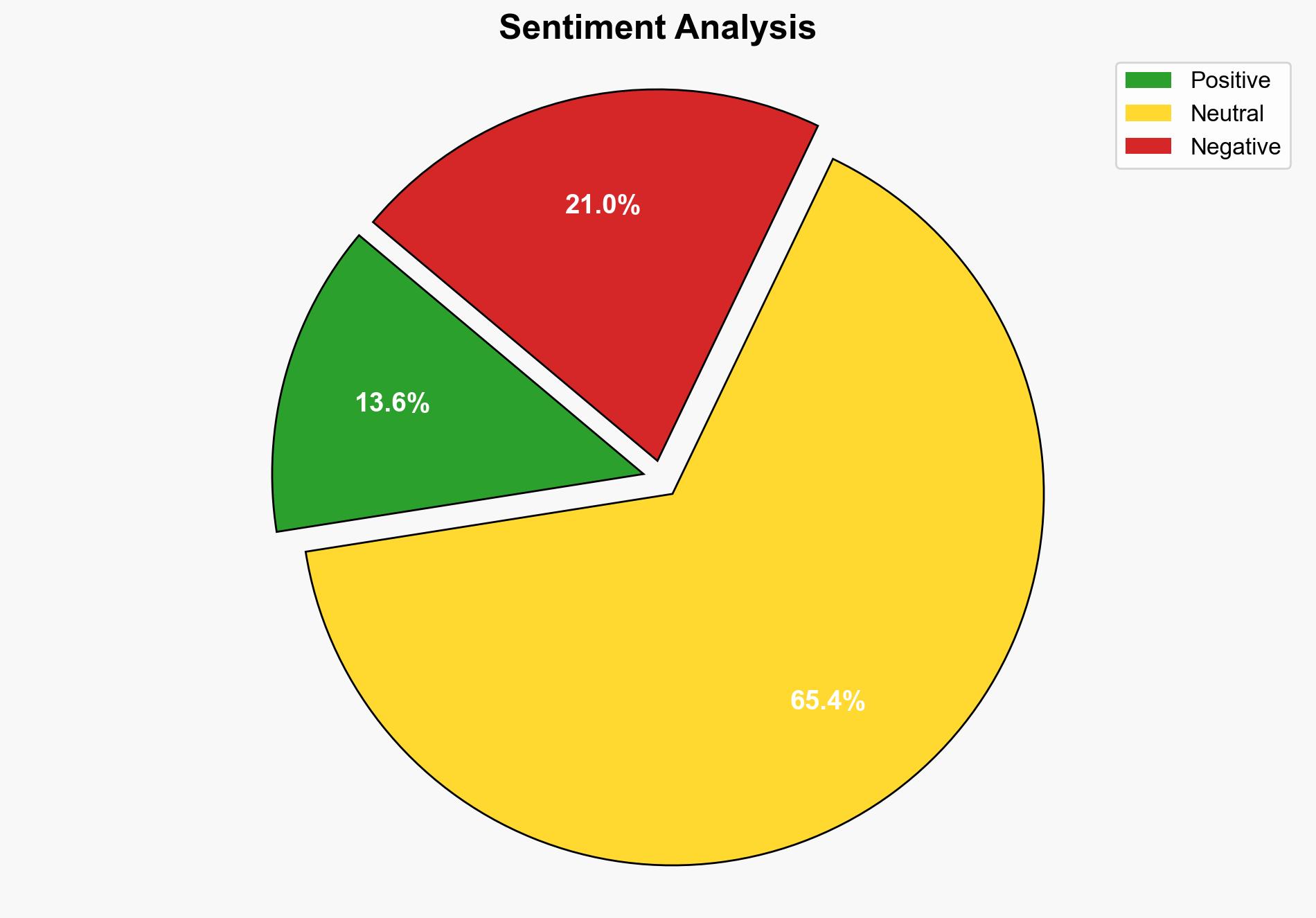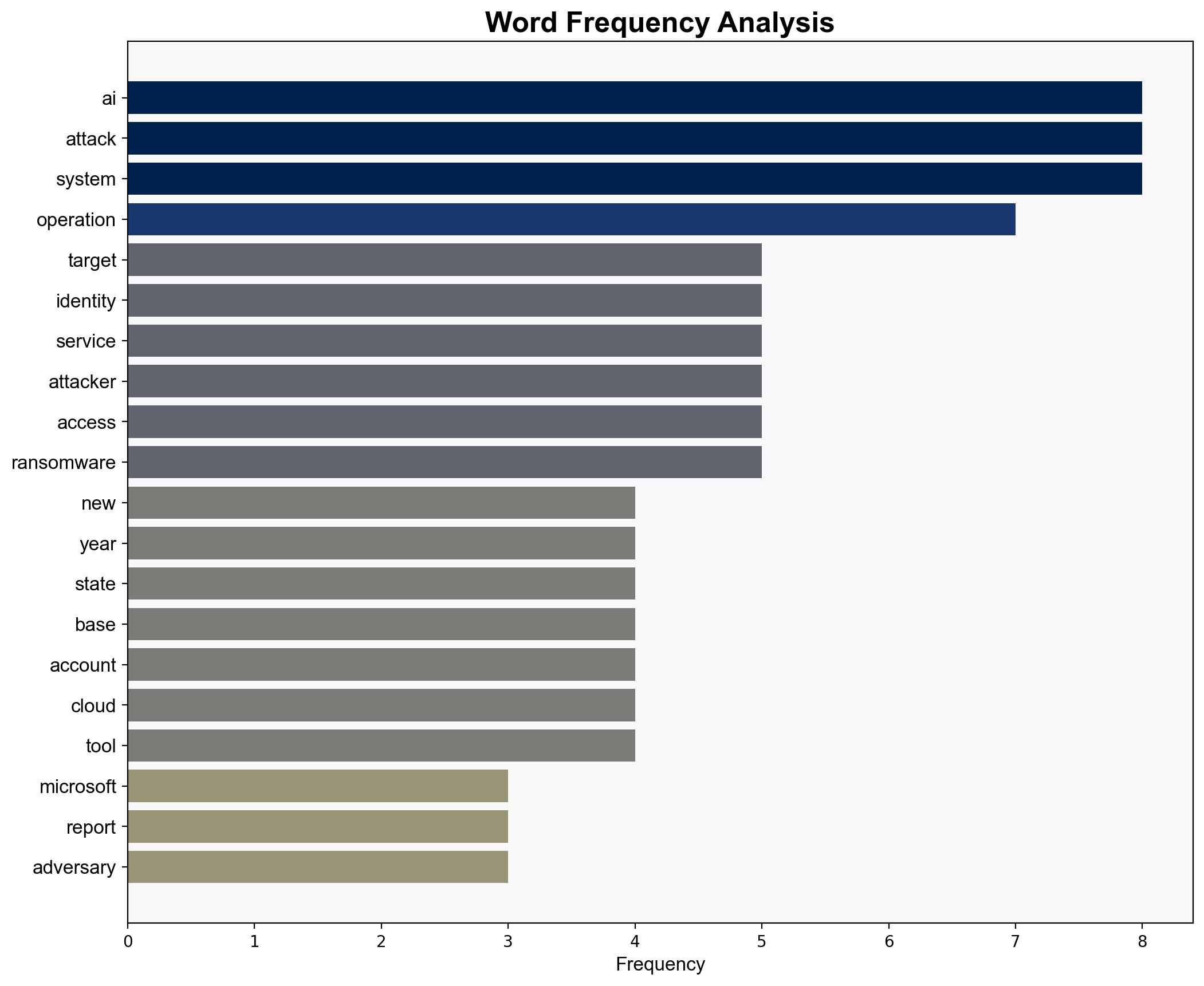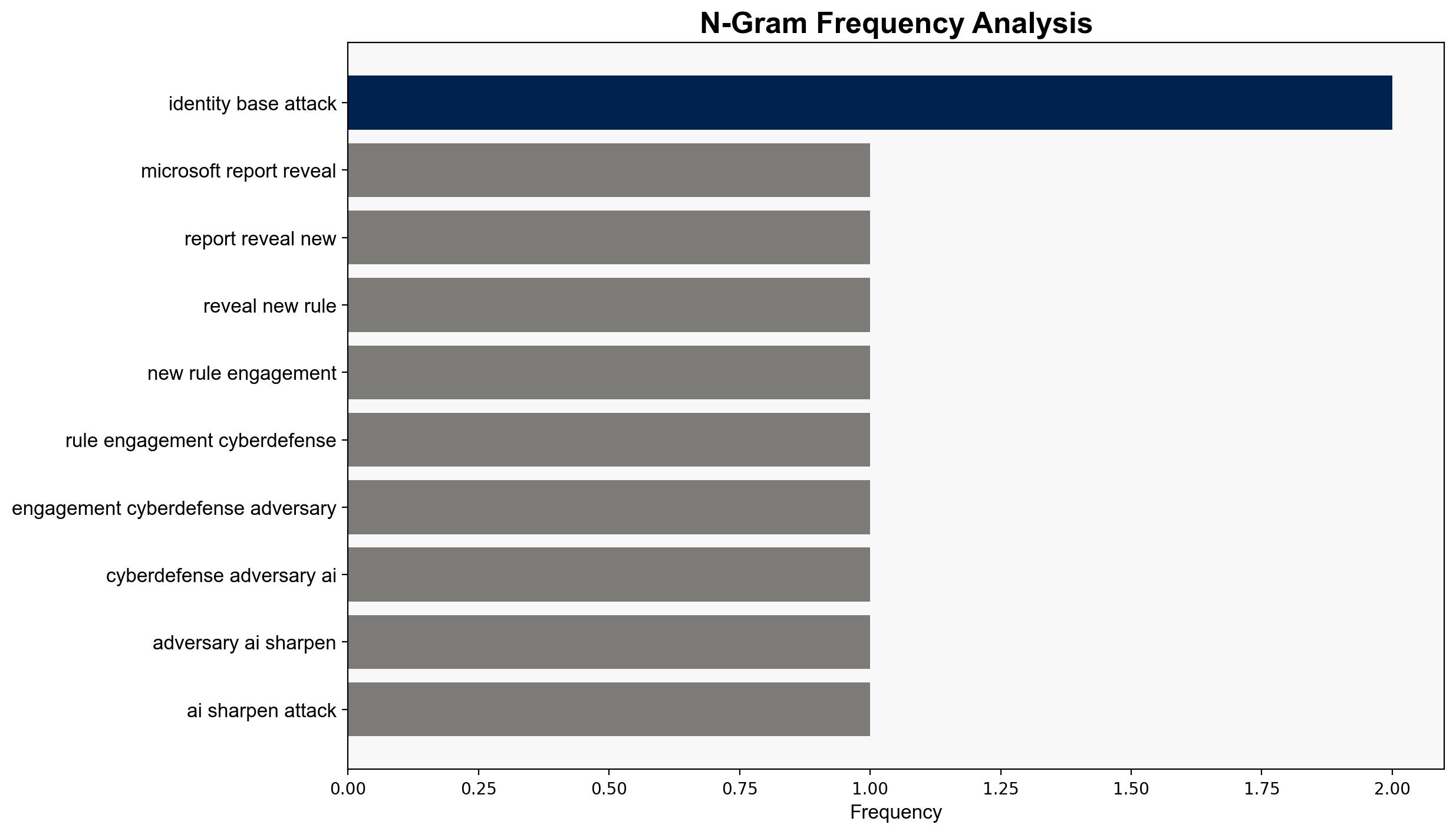What Microsofts 2025 report reveals about the new rules of engagement in cyberdefense – Help Net Security
Published on: 2025-10-24
Intelligence Report: What Microsoft’s 2025 report reveals about the new rules of engagement in cyberdefense – Help Net Security
1. BLUF (Bottom Line Up Front)
The Microsoft 2025 report highlights a significant evolution in cyberdefense dynamics, driven by adversarial AI and blurred lines between cybercrime and state-sponsored activities. The most supported hypothesis is that AI will fundamentally alter cyberattack strategies, necessitating a shift towards anticipatory and behavior-based defenses. Confidence Level: High. Recommended action includes enhancing AI-driven defensive capabilities and fostering international cooperation to address cross-border cyber threats.
2. Competing Hypotheses
1. **Hypothesis A**: Adversaries will increasingly leverage AI to automate and enhance cyberattacks, making traditional defense mechanisms obsolete. This will lead to a rise in sophisticated, large-scale attacks that are difficult to detect and mitigate.
2. **Hypothesis B**: Despite advancements in AI, human oversight and intervention will remain critical in cyberdefense. AI-driven attacks will be countered effectively through improved AI defensive tools and international collaboration.
Using Analysis of Competing Hypotheses (ACH) 2.0, Hypothesis A is better supported due to the observed increase in AI-driven attacks and the current gaps in AI defensive capabilities.
3. Key Assumptions and Red Flags
– **Assumptions**:
– AI technology will continue to advance rapidly, outpacing current defensive measures.
– Cyber adversaries have the resources and expertise to develop and deploy sophisticated AI tools.
– **Red Flags**:
– Overreliance on AI without adequate human oversight could lead to new vulnerabilities.
– Potential underestimation of the speed at which defensive AI tools can be developed and deployed.
4. Implications and Strategic Risks
The integration of AI in cyberattacks poses significant risks, including:
– **Economic Impact**: Increased costs for businesses to upgrade cybersecurity infrastructure.
– **Geopolitical Tensions**: Escalation of cyber conflicts between nations, particularly those with advanced AI capabilities.
– **Psychological Impact**: Erosion of trust in digital systems and potential societal disruption due to large-scale cyber incidents.
5. Recommendations and Outlook
- Enhance AI-driven cybersecurity measures to anticipate and counter AI-based threats.
- Promote international collaboration to establish norms and agreements on AI use in cyber operations.
- Scenario Projections:
– **Best Case**: Effective international cooperation leads to robust defenses and reduced cyber incidents.
– **Worst Case**: Unchecked AI-driven attacks cause widespread disruption and geopolitical instability.
– **Most Likely**: Gradual improvement in defenses with intermittent high-profile cyber incidents.
6. Key Individuals and Entities
– Amy Hogan-Burney
– Igor Tsyganskiy
– Criminal groups using infostealer malware like Lumma and Redline
– State actors from China, Iran, Russia, North Korea
7. Thematic Tags
national security threats, cybersecurity, counter-terrorism, regional focus




